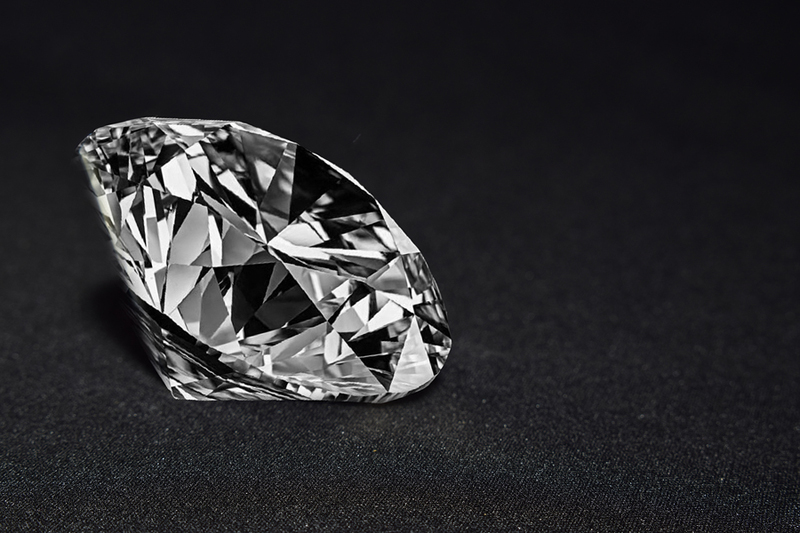CJA guide outlines laws for advertising lab-grown diamonds
February 28, 2020
This is a special release from the Canadian Jewellers Association (CJA).

"In response to the increase of lab-grown diamonds being marketed to Canadian consumers, the Canadian Jewellers Association (CJA) has released the CJA Guidelines to Advertising Lab Grown Diamonds (LGD). These guidelines are intended to assist industry trade members (i.e. retailers, wholesalers, and manufacturers) in presenting LGDs in compliance with Canadian law and avoid consumers being misled by unsubstantiated or false claims. Failing to meet the requirements of Canada’s Competition Act regarding marketing practices could result in breaching the law.
In developing these guidelines, CJA took into account the Canadian law concerning advertising and marketing to consumers, the Competition Act, in addition to the Competition Bureau’s Environmental Claims: A Guide for Industry and Advertisers, and the Canadian Guidelines for Gemstones. Further, CJA’s guidelines were developed with consideration of the U.S. Federal Trade Commission’s Jewelry Guides and other international guidelines.
Definitions
Diamond:
A naturally occurring crystalline carbon mineral in the isometric (cubic) crystal system with a hardness of 10 on Mohs’s scale; specific gravity of approximately 3.52 and a refractive index of approximately 2.42; and found in many colours. When the word ‘diamond’ is used alone it must be referring to a natural (mined) diamond.
Lab-grown diamond (LGD) [also known as lab-created diamond]:
A substance that has been produced completely or partially through human intervention; its physical, chemical, and optical properties correspond to its naturally occurring counterpart. An LGD must state it is a lab-grown (or lab-created) diamond or synthetic. The word ‘synthetic,’ ‘lab-grown,’ or ‘lab-created’ must be placed immediately preceding the word ‘diamond’ and neither word(s) shall be given greater prominence or emphasis than the other(s), nor may they be separated.
Guidelines
1. Know your supplier of LGDs
Any claims a supplier/manufacturer makes to you and, in turn, are made to a consumer must be truthful and substantiated as well as not mislead consumers. Request substantiation for claims such as ‘eco-friendly,’ ‘sustainable,’ ‘carbon neutral,’ and/or similar terms. If no credible evidence or data is available, refrain from using such unqualified terms.
Establish the location (i.e. country) of the lab where a synthetic stone was created. Does the lab conform to the environmental standards of the producing country?
Buy from a reputable source.
2. Representations made to consumers
It is important that every person selling to consumers (i.e. jewellers and their employees) know the facts about LGDs in light of the environmental claims being made in the marketplace and online in order to address any concerns or misconceptions consumers may have. While LGDs are a legitimate product, many companies selling these synthetic stones make environmental claims that have not been proven (e.g. that LGDs are more environmentally responsible than their mined counterparts). Without proof, such claims cannot be made.
‘If vague claims relating to the environment are used as slogans and are not based on real environmental protection and/or benefit, they could be considered false or misleading. Such claims must be based on adequate and proper tests undertaken prior to making such representations to the public, if they relate or refer to the environmental performance or efficacy of a product.
Environmental claims that are vague, non-specific, incomplete, or irrelevant and that cannot be supported through verifiable test methods should not be used.’
Further, statements that LGDs retain or increase in value also have not been proven and, thus, cannot be made.
3. Disclosure
It is imperative full disclosure along the full supply pipeline be adhered to.
4. Language
Refer to the Canadian Guidelines for Gemstones (sections D1 and D4) to confirm what terms/words should be used to describe an LGD. To request a copy of these guidelines, email CJA.
For further information, contact the Canadian Jewellers Association at 1-800-580-0942 or (416) 368-7616, or via email at info@canadianjewellers.com. "
https://www.jewellerybusiness.com/news/ ... ntent=news
Copyright Law of the United States Title 17 § 107 Limitations on exclusive rights: Fair use
Notwithstanding the provisions of sections 106 and 106A, the fair use of a copyrighted work, including such use by reproduction in copies or phonorecords or by any other means specified by that section, for purposes such as criticism, comment, news reporting, teaching (including multiple copies for classroom use), scholarship, or research, is not an infringement of copyright.